Are you leveraging the full potential of the in-app NPS survey to tap into customer feedback? Discover the effectiveness of in-app NPS surveys in capturing customer sentiment and learn best practices for embedding them into your digital platform for more meaningful insights that drive growth.
Ready to learn how a simple question can lead to big changes? Let’s get started.
Key Takeaways
- In-app NPS surveys are essential tools for gathering real-time customer feedback, improving satisfaction, loyalty, and engagement, and providing actionable insights for product development in digital-centric companies.
- Effective in-app NPS surveys require strategic timing, personalization, and careful crafting of questions and follow-ups to yield the most valuable feedback while integrating seamlessly with the customer experience.
- Having in-app NPS surveys that are tailored for mobile ensures a smoother user experience. This leads to higher response rates and more accurate feedback, making it easier for customers to take the surveys without any inconvenience.
- Analyzing in-app NPS survey data enables companies to identify customer satisfaction trends, benchmark against the industry, and turn feedback into action, impacting product improvements and customer retention strategies.
What’s NPS All About?
Think of NPS as a simple way to ask customers, “On a scale from 0 to 10, how likely are you to recommend our service or product to friends or family?”. The answers help businesses figure out who’s a fan (Promoters), who’s on the fence (Passives), and who’s not too happy (Detractors). Knowing this is important because loyal customers are often repeat buyers and will likely spread good word-of-mouth about the brand, bringing in more customers. The difference between Promoters and Detractors gives us the NPS score, helping businesses understand where they stand in terms of customer loyalty.
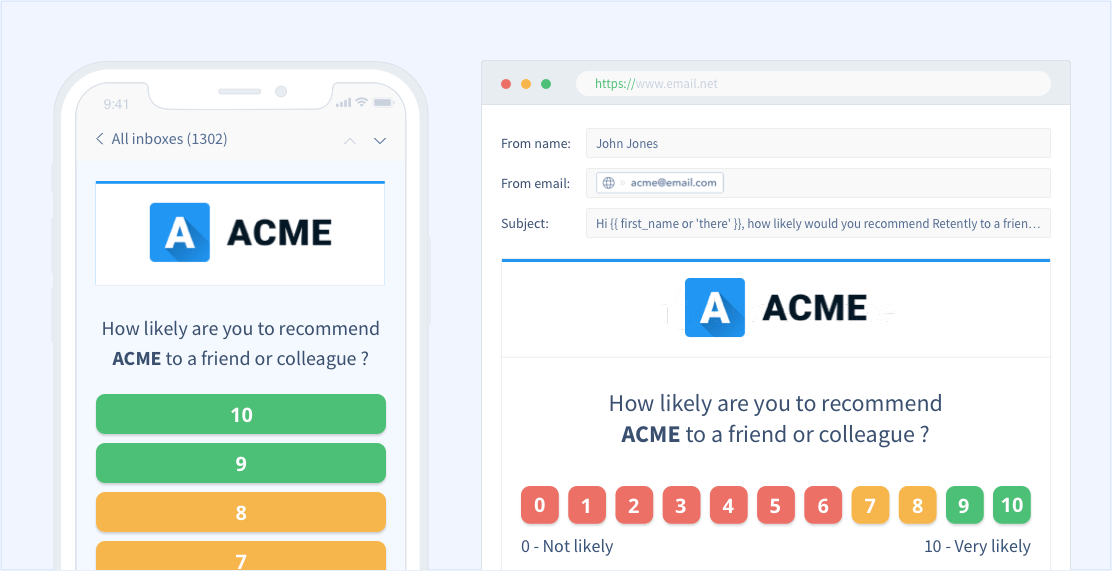
Why In-App NPS Surveys Matter
Boosting customer satisfaction and loyalty can seem an overwhelming task. In this context, in-app NPS (Net Promoter Score) surveys prove to be essential tools. These are the little questionnaires that pop up while you’re using an app, asking for quick feedback. They’re super handy because they catch you right in the moment, while your experience is fresh in your mind, generating the most genuine insights.
It’s like giving real-time feedback while you’re in the action, whether you’re shopping or just browsing. This immediate feedback is gold for any business looking to make your experience even better.
By offering feedback directly from within the app, in-app NPS surveys make sure you hear from your customers right away and improve the quality of the data you gather. Monitoring NPS scores is key. It tells you how likely customers are to recommend your product or service – a key indicator for boosting both customer satisfaction and brand advocacy.
Benefits of In-App NPS Surveys
In-app NPS surveys are a valuable asset with an outstanding benefit being their high response rates compared to the old-school survey methods. But it’s not just about the quantity of the feedback – it’s also about the quality. In-app NPS surveys blend seamlessly into the user experience due to their inherent design within apps.
These in-app evaluations do a lot more than just measure satisfaction levels or collect numbers – they are about understanding your feelings toward the product or service. They get customers more involved, figuring out consumer preferences, and pinpointing areas of friction which require attention. Such insights lead to increased retention, while improving the overall user experience over time. For businesses that focus heavily on products – especially those deeply integrated into digital ecosystems – in-app NPS surveys help them quickly adjust through informed decision-making, while highlighting key moments in the customer journey in real-time.
So, why are in-app NPS surveys important? Because they provide a direct line to you, the user, making sure your voice is heard loud and clear, which in turn helps make the experience better for everyone. They’re putting you in the driver’s seat to help steer the product’s future.
To summarize the key benefits, consider:
- Immediate Feedback: Captures real-time sentiments that reflect the current customer experience.
- User Retention: Identifies what keeps users coming back and what might be driving them away.
- Enhanced Decision-Making: Yields data-driven insights to guide development priorities and marketing strategies.
- Ongoing Improvement: Helps establish a loop of feedback and updates, showing users the value of their input.
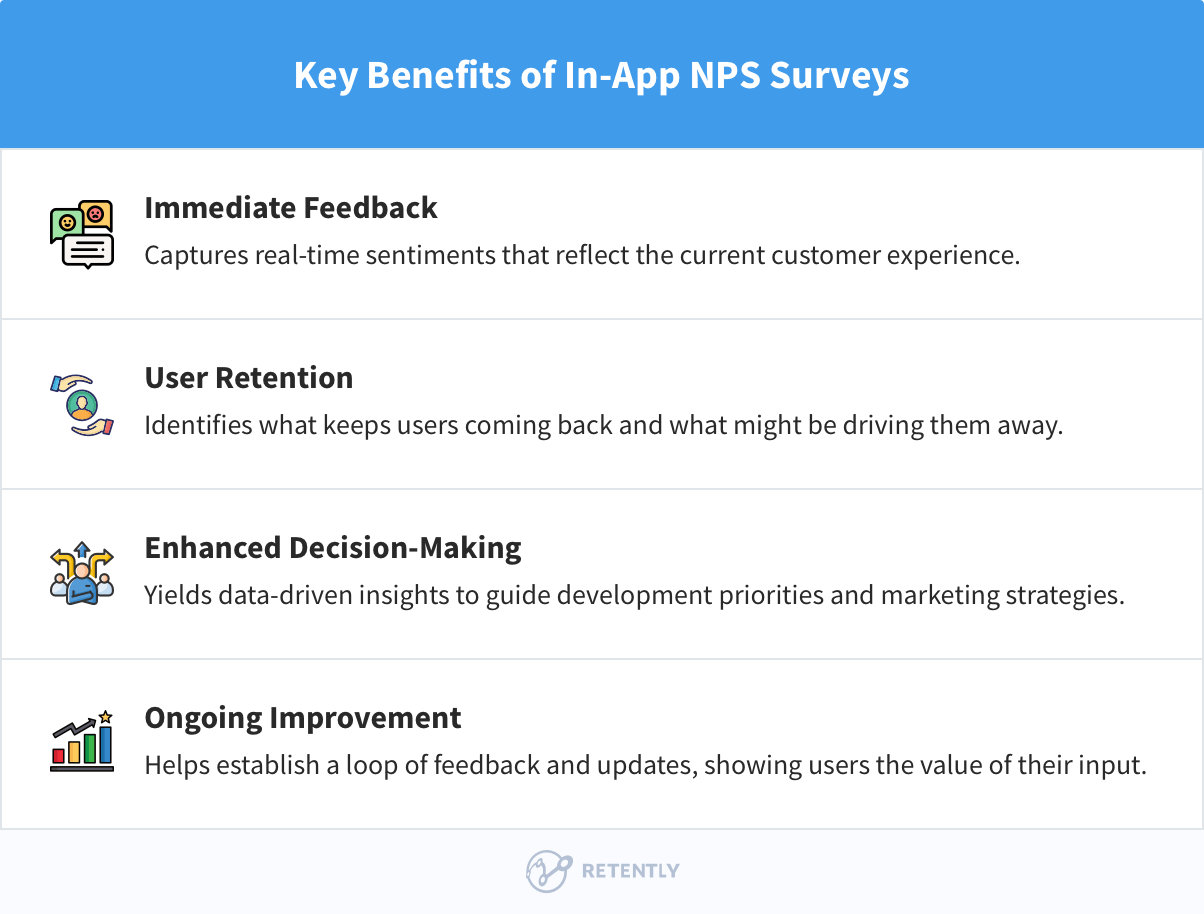
Think of them as sharpshooters, picking just the right moment to ask for feedback while you’re using the app. And setting them up? Super easy – just integrate a simple plug-in, and you’re good to go. It’s a cost-effective way for companies looking to harness customer insights.
Comparing In-App NPS Surveys to Other Channels
In-app NPS surveys are a great survey channel for capturing customer feedback. Unlike offline surveys, which can be conducted without the need for internet access but fail to provide immediate analytics, in-app NPS allows for quick data collection and analysis. Telephone-based approaches can yield instant responses and enjoy higher participation. However, they also introduce the potential for bias from the interviewer’s side, depending on how the questions are asked, as well as extreme scoring from respondents.
The familiar email surveys are kind of a hit-or-miss these days because everyone’s inbox is just overflowing, making it difficult to re-engage customers who have recently become inactive. Surveys sent via SMS can feel a bit too personal and might annoy people. Like someone stepping into your personal space uninvited. Not the best feeling.
On the other hand, in-app messaging for NPS surveys is totally changing the game, delivering prompt user feedback while enhancing the overall experience. It’s clear that this approach really works, given the impressive 187% jump in usage from one year to the next. More and more businesses are using in-app NPS strategies to get instant insights right within their apps.
In a nutshell, NPS helps businesses grow by keeping a pulse on customer satisfaction, and in-app NPS surveys are perfect for gathering that info quickly and efficiently. Let’s dive deeper into how these surveys can really make a difference in keeping customers happy and loyal.
Crafting an Effective In-App NPS Survey
Crafting an in-app NPS survey involves carefully mapping out customer satisfaction and loyalty by using an 11-point scale that captures quantitative data alongside a qualitative question to garner deeper insights. A great in-app NPS survey combines the numerical scoring system with these narrative questions, allowing for comprehensive feedback that uncovers the reasons behind the scores.
Yet, it’s not just about asking smart questions. How your in-app NPS surveys look is really important, too. You want them to fit right into your app’s style (using similar fonts, colors, and design elements), like they belong there, so tailoring the look of your in-app NPS surveys ensures they blend seamlessly. These surveys are key for gathering critical input on everything from basic functionality to new features and specific aspects of the user interface. It’s all about helping businesses that focus on products get the guidance they need to make their offerings even better.
Ready to get the lowdown on crafting in-app NPS surveys that users won’t just ignore? Let’s jump into how to time them just right and ask questions that actually get responses.
1. Personalizing Your Survey
Making your in-app NPS surveys feel more personal to each user can really make them stick. By tailoring these surveys to reflect the individual actions users take within your app, and tweaking your questions – especially the follow-ups – to connect better with different groups, you can boost how many people take part and get better, more meaningful feedback. It’s all about making sure the survey feels relevant and engaging to everyone who sees it.
This may involve:
- addressing respondents directly using their name
- formulating survey questions that reflect past interactions between the respondent and your product or service
- concluding with custom notes or expressions of gratitude. Check our guide on “thank you for your feedback” responses for some ideas.
Adding a simple feedback tab on the website or in the app lets your users share their thoughts whenever they want. It’s a great way to gather honest feedback without being pushy. This way, customers can tell you what they think about the services on their own time, through these in-app NPS platforms.
2. Timing and Frequency
Timing is everything when it comes to asking users to fill out your in-app NPS survey. You want to catch them at a moment when they’re likely to give genuine feedback but not so wrapped up in what they’re doing that the survey feels like an annoying interruption.
To avoid interrupting users while they’re engaged with tasks, it’s essential to integrate NPS surveys into the app experience thoughtfully. You don’t want to bug your users while they’re busy doing something important. A smooth way to do this is by slipping in a quick feedback option without stopping what they’re up to. For instance, Asana pops up a little banner that lets you leave feedback without interrupting your workflow. Sonic gets your thoughts by employing contextual prompts for seamless integration. And Retently? It tucks the survey neatly at the bottom of the screen, so it’s there if you need it but out of the way if you don’t.
For better response rates, it’s key to time your in-app NPS surveys just right, especially when reaching out to your most engaged users. Setting them up at the perfect moment and giving clear prompts can really make a difference. For more ideas consider the folowing tips:
- Map the User Journey: Start by mapping out the typical paths users take within your app. Identify moments of engagement or significant interactions.
- Consider a Positive Interaction: Present the survey when users are likely to be more receptive – like after a positive interaction, rather than during or after negative experiences unless specifically tracking those scenarios for improvement. Choose points where feedback would be most valuable and least intrusive. For example, after a seamless checkout process in an ecommerce app. These positive moments can lead to more favorable feedback and higher engagement with the survey.
- After Reaching a Milestone: A good rule of thumb is to ask for feedback after the user has completed a significant action – like completing a set-up or finalizing a purchase/a transaction. This not only gives them context to your question but also catches them when they have a strong opinion about their experience.
- Post-Interaction: Consider prompting the survey after a user interaction with customer support or following a major update to see how these changes are being received. If a user has had an interaction with support services, asking for feedback after the issue is resolved can provide insights into the effectiveness of your support team and process.
Also, don’t forget to give participants the choice to opt out to boost genuine engagement. Embracing such approaches can really increase in-app NPS survey performance.
For truly insightful and better participation in in-app NPS questionnaires, wait until customers had enough interaction with your service or product – long enough to have a clear opinion about it.
3. Framing Questions and Follow-Ups
Crafting efficient in-app NPS survey inquiries and subsequent questions sets the stage for qualitative feedback and actionable insights, which make your NPS scores more meaningful. The classic NPS question, “How likely are you to recommend us to a friend or colleague?” is powerful because it’s straightforward. Stick to this format to keep things clear and simple.
While the primary NPS score gives you a broad sense of user sentiment, follow-up questions help you dig deeper. By using conditional logic you can customize follow-up queries according to different user profiles, such as Promoters, Passives, and Detractors for more precise information. Depending on the score given, ask something like, “What’s the main reason for your score?” or “What can we improve to make your experience better?”
High scorers can be prompted with what they loved, while lower scorers can be asked about specific improvements or issues. This can turn vague dissatisfaction into actionable insights.
Make sure the language matches the tone and style of the brand. If your app has a casual vibe, keep the question informal. Stick to one or two follow-up questions to avoid fatigue. Make them open-ended to allow users to express their thoughts freely.
Make sure your question directly relates to the user’s recent experience. This relevance makes the question feel more thoughtful and less generic, increasing the likelihood of a response.
In-app surveys should sequence open-ended questions after closed-ended ones. This allows respondents to provide detailed explanations that add context to their numerical ratings. By pairing NPS scores with these deeper insights into customer sentiment businesses can interpret customer evaluations comprehensively and develop strategies based on this in-depth user feedback.
4. Ensuring Mobile-Optimized In-App NPS Surveys
The survey should look good and function well on any device. This means using responsive design principles to ensure the survey adapts to different screen sizes and orientations. A responsive design ensures that the survey is as usable on a small smartphone as it is on a large tablet.
A simple one or two-question format is usually sufficient. Yet, they should be easily dismissed or postponed by the user, respecting their choice not to participate at that time.
The required user interaction should be kept to a minimum. For example, using sliders or simple tap responses can reduce the effort neeed to complete the survey, making the process quicker and less intrusive.
Also, you should ensure the survey loads quickly and doesn’t affect the overall performance of the app. Slow load times can frustrate users and potentially skew your NPS results negatively.
By strategically placing the surveys at optimal points in the user journey and ensuring the technical setup is sound and seamless, you can enhance the user experience rather than disrupt it. This careful integration helps maintain user engagement and yields more accurate and useful feedback through your in-app NPS surveys.
Increasing Engagement and Response Rates
Now that we’ve integrated NPS surveys into the app seamlessly, the next step is making sure users actually want to participate. Getting users to participate in your in-app NPS surveys is key to collecting meaningful data. But how do you encourage more users to take part without nagging them? It’s all about motivation and showing them the value of their feedback. Let’s dive into how incentives, gamification, and clear communication can boost engagement and response rates.
1. Incentives and Their Impact on Response Rates
Consider offering small incentives for completing surveys, such as discount codes, reward points in loyalty program, or entries into a giveaway. These little perks can significantly increase the likelihood of users taking the time to respond.
Make sure the incentives are relevant and valuable to your audience. For instance, a fitness app might offer a free week of premium features. Users should know what they’ll get in return for their time. This transparency increases the likelihood of participation while building trust.
2. Gamification Elements in In-App NPS Surveys
Turning the survey into a mini-game can make the feedback process enjoyable rather than a chore. Integrating elements like progress bars or fun visuals that evolve as users fill out the survey do great in this respect.
Depending on the industry you are in, you could set up a system where users can earn badges or achievements for participating in the in-app NPS surveys. This not only encourages them to engage once but can motivate them to participate regularly.
3. The Value of Feedback
Let users know that their feedback contributes to a more personalized and improved user experience. When they see that their input could lead to enhancements that make their use more enjoyable or easier, they’re more likely to contribute.
After collecting feedback, take visible actions. Implement the changes customers have asked for and then communicate back to them what has been updated. This follow-through demonstrates commitment to their input.
Regularly update clients on how their feedback is being used. Consider a monthly newsletter or a dedicated section in the app where you highlight recent improvements driven by user suggestions.
For key functionalities or new features, consider setting up beta tests or focus groups from your audience. Inviting customers to test new updates before they go live can make them feel integral to the development process.
By implementing these tips you can transform your in-app NPS surveys from a data collection tool into a dynamic part of your engagement strategy.
From Data to Action: Analyzing In-App NPS Results
Once you’ve collected NPS feedback, it’s time to analyze this data and act on it. This is where the real magic happens – turning numbers and comments into actionable improvements that can significantly enhance your customer experience.
Here’s how you can make the most of the information you collect.
1. Understanding NPS Scores
Understanding NPS scores is like cracking a secret code that tells you how happy and loyal your customers are. The perception of a good Net Promoter Score can change depending on the industry you are in, but generally, it goes something like this:
- A score below 0 is a bit worrying – a red flag.
- Scores ranging from 0 to 30 are seen as good, but there is room for improvement.
- Scoring between 30 and 70 is regarded as a great place to be in.
- Any score above 70 is considered outstanding.
Nevertheless, it’s important to recognize that various factors impact NPS scores, including how the survey was conducted, the particular tolerance thresholds of your customers, along with both sample size and response rate amongst those surveyed. It represents far more than mere digits. It embodies a comprehensive gauge of customer experience.
2. Categorizing Feedback
Exploring in-app NPS data provides clear insights into the strengths and weaknesses of your product or service. This valuable feedback sorts customers into three groups: Detractors (scoring from 0 to 6), Passives (with scores of 7 to 8), and Promoters (rating 9 to 10). Understanding the anatomy of a customer and how these categories break down helps you grasp customer satisfaction levels.
Look for patterns or common themes in the feedback from each group to understand what drives dissatisfaction, neutrality, or delight among your users. Segment the data by demographics, usage patterns, or other relevant metrics. This can help you identify which parts of your user base are most and least satisfied.
Group feedback into themes like usability issues, feature requests, or performance problems. This way you can prioritize which areas need immediate attention and which can be scheduled for future updates. Look beyond the score. NPS provides a quantitative measure of loyalty, but the comments and reasons behind a score offer qualitative insights. Analyze these comments to understand the why behind the scores.
3. Identifying Trends and Patterns
Analyzing NPS data to identify recurring themes and insights is akin to piecing together a puzzle. It sharpens your understanding of customer feedback, pinpointing areas that need improvement or particularly highlighting valuable comments from those most passionate about your product.
To automate the process, use text analysis tools to parse open-ended responses. These tools can help identify frequently mentioned keywords or sentiments, giving you a clearer picture of users’ thoughts and feelings.
Beyond just the words, try to understand the context in which feedback was given. Was a negative score given after a recent update or a service outage? Understanding the “why” behind the feedback is as important as the feedback itself.
Track NPS scores over time to identify trends. Are your improvements leading to better scores? Are there recurring issues that you haven’t yet addressed? This ongoing analysis helps pinpoint both successes and areas needing further attention.
When companies measure their NPS scores, benchmarks it against others within their sector and act to reduce Detractors while boosting Promoters, they effectively manage customer satisfaction. It’s like keeping score with other companies in your industry to see who’s doing better at making customers happy. Thus, monitoring changes in NPS over time also helps figure out how new services or products resonate with consumers or point out shifts in consumer preferences.
4. Turning Feedback into Action
Customer feedback is invaluable, yet it holds no value without implementation. Integrating NPS scores with CRM and project management platforms gives you a detailed view of what customers think and feel, informing decisions that shape your product and service. To effectively collect feedback, it’s important to allow customers to drive improvements with their insights.
Moreover, actively addressing concerns enhances customer engagement and improves both the relationship and the strategy for deploying in-app surveys. For companies focused on leading with their products, prioritizing initial user experiences through onboarding feedback is key to retaining new users and refining their approach – essential steps for long-term success.
By analyzing NPS data, categorizing feedback, and thoughtfully responding to it, you can create an ongoing improvement loop that keeps your product grow. This proactive approach increases the customer lifetime value and attracts new customers through commitment to user satisfaction.
In-App NPS Survey Tools and Platforms
Selecting an appropriate in-app NPS survey tool involves evaluating options for customization, functionality, and integration potential. Different specialized NPS software offer methods to collect and analyze in-app NPS data with features unique to each service.
Choosing the Right Tool
Choosing the appropriate tool involves more than just ensuring it has certain features. The ideal survey tool should seamlessly fit your company’s specific requirements. It is important to have a survey tool that allows customization, such as white-label options and custom branding, so surveys can be crafted to reflect a brand’s unique identity.
A notable NPS survey tool makes it super easy to whip up in-app surveys. It should let you ask follow-up questions based on initial responses. Go for a survey tool that lets you set up everything without needing to code, sort your audience before you send anything out, and automatically handle tasks after you get the feedback. This will simplify the process and really up your game in collecting customer insights.
Integration with Existing Systems
Adding in-app NPS surveys should feel like fitting the perfect piece into a puzzle. It should blend right into your existing setup, boosting what’s already there without messing anything up. Therefore, go for a tool that integrates easily with your existing tech stack and offers comprehensive analytics features.
Most modern survey platforms offer APIs that allow you to seamlessly integrate their functionalities into your environment without heavy lifting on the development side. This makes it easier to deploy surveys exactly where you need them.
Also, when you plug NPS surveys into specialized survey tools, they’ll run as smoothly as any regular message in your campaign. This integration makes collecting and analyzing data in your CRM systems a breeze.
Quick Wins
We’ve covered a lot about the ins and outs of in-app NPS surveys, from their design and implementation to the strategic use of feedback for improvement. Let’s recap the best practices and emphasize why ongoing improvement and user feedback are so crucial for your success.
- Timing and Frequency: Trigger in-app NPS surveys at moments that make sense within the customer journey, such as after achieving a milestone or completing a significant action. Keep the frequency reasonable to avoid survey fatigue.
- Question Design: Keep NPS questions simple and direct. Incorporate one or two follow-up questions to gather actionable insights but ensure they’re concise and relevant.
- Seamless Integration: Embed in-app NPS surveys in a way that feels natural to the app flow to keep the user experience smooth. Use native UI elements and ensure the survey is responsive and non-intrusive.
- Motivating Participation/Motivation and Incentives: Use incentives and gamification to boost engagement, making feedback both rewarding and enjoyable. Clearly communicate the value of feedback to users to encourage participation.
- Analyzing NPS data: Segment and categorize feedback for actionable insights. Use qualitative data to understand the reasons behind the scores and tailor your improvements.
- Responding to Feedback: Show users that their feedback leads to tangible changes. Regularly update them about how their input has shaped updates and new features.
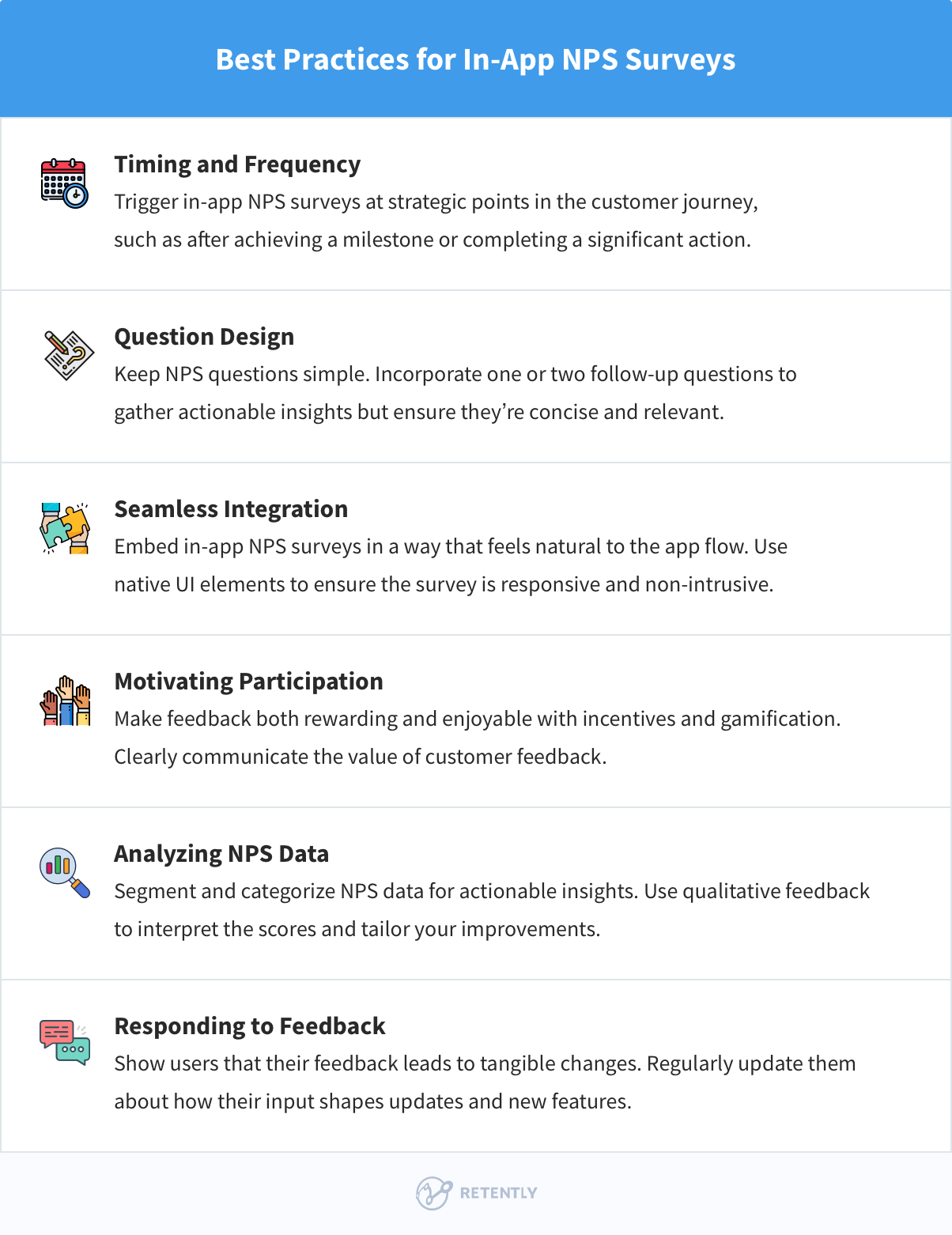
Conclusion
We’ve been diving into the ins and outs of in-app NPS surveys, from understanding their importance to crafting effective surveys, analyzing data, and choosing the right tools for the job. Giving your customers a voice through in-app NPS surveys isn’t just a strategy; it’s a commitment to ongoing improvement and customer satisfaction.
Now that you’ve seen the importance of well-implemented in-app NPS surveys, it’s time to take a closer look at your own approach. Are your surveys yielding the insights you need? Are they integrated smoothly into the user experience? Take a moment to assess how you collect and use user feedback.
Start by integrating one or two new strategies into your current approach, like improving the timing of your surveys or adding an incentive for completing them. Use A/B testing to see what changes make a positive impact on your response rates and user satisfaction.
Remember, the goal of NPS isn’t just to score your performance – it’s to unlock insights that drive better user experiences and foster lasting relationships with your customers. With a little effort and the right strategies, you can significantly increase the value that these surveys bring to both your team and your customers. Take the next step today, start a free trial and making every user interaction count with Retently towards a better, more user-centered experience.























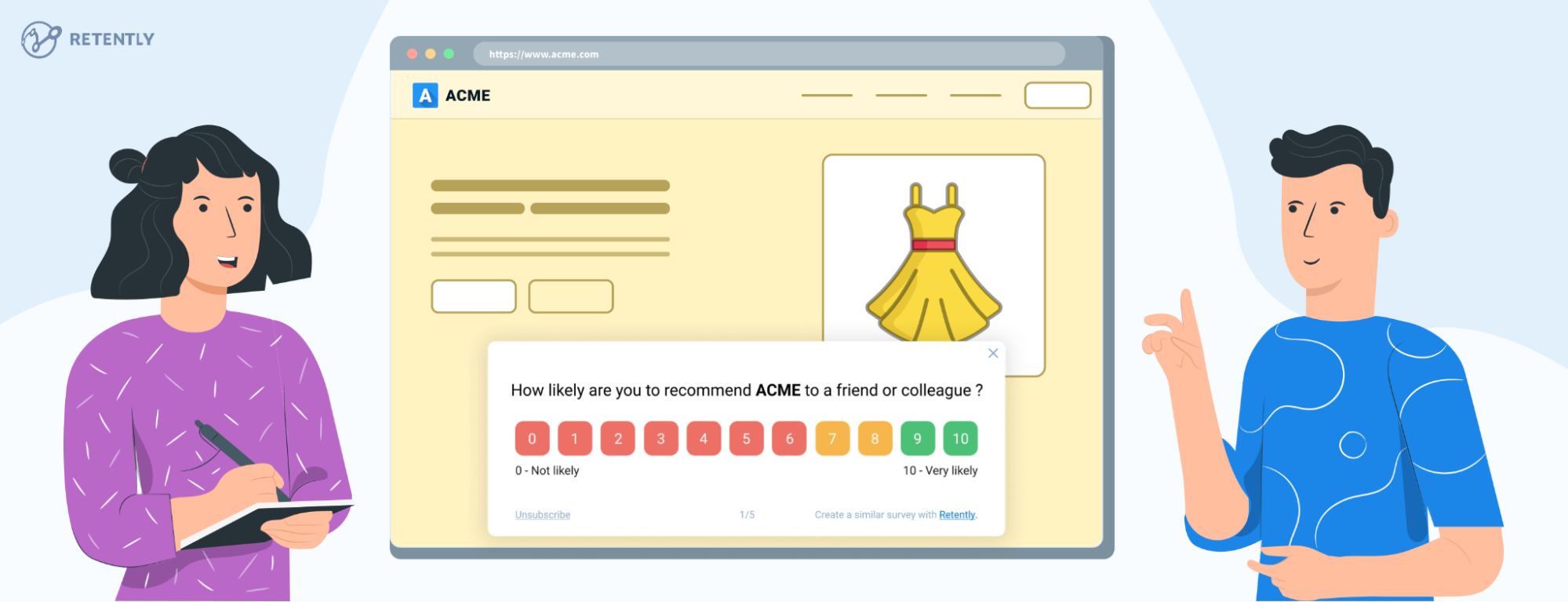





 Greg Raileanu
Greg Raileanu 

 Alex Bitca
Alex Bitca 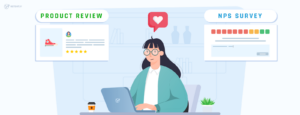



 Christina Sol
Christina Sol